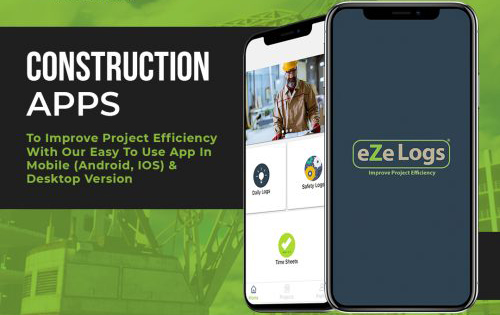Construction projects require closeout documents. These records, certificates, manuals and reports serve as evidence of the project’s design, execution and final outcomes.
Closeout documents are essential for several reasons. Firstly, they guarantee the project has been finished in accordance with all relevant codes and regulations. Secondly, they serve as evidence of contractor quality work which could be essential in the case of legal disputes.
Lastly, closeout documents serve as a reference point for future maintenance and repair work which helps guarantee the long-term stability and safety of a building.

This article aims to provide a comprehensive list of closeout documents required for construction projects. It’s divided into three primary categories: pre-construction, during-construction and post-construction closeout documents. Furthermore, we’ll explain the significance of each document and its role in the overall closing process.
Key Takeaways
Pre-Construction Closeout Documents:
- Bid Documents
- Pre-construction meeting minutes
- Insurance Certificates
- Bonding Documents
- Permits and Approvals
During Construction Closeout Documents:
- Change orders
- Daily Construction Reports
- Request For Information (RFI) logs
- Material and Equipment Submittals
- Progress payment applications
Post-Construction Closeout Documents:
- Final Inspection Reports
- Punch Lists
- As-built drawings
- Operation and Maintenance Manuals
- Warranty Documents
Other Closeout Documents:
- Notice of Completion
- Certificate of Occupancy
- Release of Liens
- Final Payment Application
Use the software to manage the whole construction management process
Pre-Construction Closeout Documents
Before any construction work commences, several essential documents must be collected and organized. These pre-construction closeout documents include:
Bid Documents: Bid documents provide the scope of work, project specifications and pricing information from the contractor. Typically submitted during bidding processes, these documents serve as a benchmark for negotiating the construction contract.
Pre-construction meeting minutes: These minutes record the discussions and agreements reached during a pre-construction meeting between the owner, contractor, and other stakeholders before construction begins. Typically, they provide an overview of project goals, timelines, and responsibilities.
Insurance Certificates: Contractors are required to present proof of insurance, such as general liability and workers’ compensation coverage. These documents guarantee the contractor is adequately covered for any accidents or damage that may occur during construction.
Bonding Documents: Contractors may also be required to post performance and payment bonds. These documents guarantee the contractor will complete the project according to the specifications in the contract, paying all subcontractors and suppliers on schedule.
Permits and Approvals: Before construction can begin, permits and approvals from local and state regulatory agencies must be obtained. These documents guarantee the project complies with all applicable codes and regulations. Examples of permits include building permits, zoning permits, and environmental permits.
During Construction Closeout Documents
Throughout the construction phase, various documents are generated that must be organized and collected for closeout. These during-construction closeout documents include:
Change orders: Change orders record any modifications made to the original scope of work or contract, whether due to design revisions, unexpected circumstances, or owner requests for modifications. Change orders serve as a record of these amendments and their impact on project cost and timeline.
Daily Construction Reports: Daily construction reports document the daily activities and progress made on the construction site. They may include information regarding work completed, work in progress, as well as any issues encountered. Daily reports provide a record of the project’s timeline with any delays or disruptions.
Request For Information (RFI) logs: RFIs are requests made by contractors or subcontractors for clarification or additional details regarding a project’s design or specifications. RFI logs record these requests and the responses provided by the design team, ensuring all parties have accurate and up-to-date data.
Material and Equipment Submittals: These documents provide comprehensive details on the materials and equipment to be utilized in a construction project, including specifications, drawings, and product data. Material and equipment submittals guarantee that specified items are utilized during construction and meet required standards.
Progress payment applications: Progress payment applications provide a snapshot of the work completed during an agreed-upon period and the associated payment requested by the contractor. They guarantee payments are made based on completed tasks, helping track project finances.
Post-Construction Closeout Documents
Once construction is complete, several essential documents must be collected and organized for post-construction closeout. These post-construction closeout documents include:


Final Inspection Reports: After the regulatory agencies responsible for inspecting a project have completed their final inspection reports, these confirm that all applicable codes and regulations have been complied with.
Punch Lists: Punch lists are documents that outline any incomplete or unsatisfactory work that needs to be corrected before the project can be considered complete. They are typically created during a final walkthrough of the project to guarantee all tasks have been satisfactorily completed for the owner’s satisfaction.
As-built drawings: As-built drawings record any changes made during construction, providing an exact representation of the project as it stands when completed. They serve as a guide for future maintenance and repair work and form part of the closeout documents.
Operation and Maintenance Manuals: These manuals offer comprehensive information on the operation and upkeep of a building’s systems and equipment. They are essential in guaranteeing that the building is properly looked after, with any issues addressed promptly.
Warranty Documents: Warranty documents offer information on the warranties and guarantees provided by contractors or equipment manufacturers, ensuring that owners are aware of their coverage options and can take advantage of them if needed. They act as a reminder to make sure everyone gets what they’re paying for.
Other Closeout Documents
In addition to pre-construction, during-construction and post-construction closeout documents, there are other vital documents that must be collected and organized. These additional closeout documents include:
Notice of Completion: A Notice of Completion is a legal document that signals the completion of a construction project. It must be filed with the appropriate government agency and serves to inform all parties involved that work has been completed.
Certificate of Occupancy: Issued by the local government, this Certificate of Occupancy confirms that a building is safe to occupy. It must be obtained before it can be put to its intended use.
Release of Liens: A Release of Liens is a legal document that releases contractors and subcontractors from any liens or claims placed on the property during construction. It guarantees that the owner has a clear title to the property.
Final Payment Application: The contractor submits a Final Payment Application to request final payment for all completed work. It includes an overview of all tasks completed as well as any outstanding change orders or other items which could affect the amount due in full.
Project Closeout Report: This comprehensive summary provides a detailed account of the entire construction project, including its scope, budget, schedule and any issues encountered along the way. It serves as a useful reference point for future endeavours while helping identify areas for improvement.
The Bottom line
The closeout phase of a construction project is an essential step. It involves collecting, organizing and archiving all relevant documents generated during its lifespan. The significance of closeout documents cannot be overemphasized as they provide essential information and serve as documentation of the project’s history.
Pre-construction closeout documents include bid documents, pre-construction meeting minutes, insurance certificates, bonding documents, permits and approvals. During construction closeout documents include change orders, daily construction reports, request for information (RFI) logs, material and equipment submittals as well as progress payment applications.
Post-construction closeout documents include final inspection reports punch lists as-built drawings operation/maintenance manuals warranty documents Notice of Completion Certificate of Occupancy Release of Liens Final Payment Application and Project Closeout Report.
Proper organization and compilation of closeout documents is essential for ensuring project completion, adhering to legal compliance, and providing accurate records for future reference. A well-executed closeout process helps facilitate a smooth transition from construction to operation, decreasing risk and guaranteeing the long-term success of a building.


